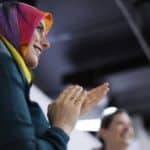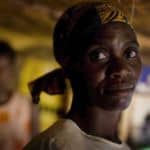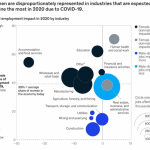Energy Poverty is Not Gender Blind: How Companies, Funders and Policymakers Can Empower Female Energy Consumers Across Africa
For those of us who have reliable access to energy, it is easy to forget exactly how transformative that technology is, or how far its benefits extend into our daily lives. But nearly everything that makes it possible for us to live safely and with dignity — from healthcare and education to food security and personal safety — relies fundamentally on energy. That is why we at Open Capital have spent more than a decade working intensively with businesses, investors, development partners and governments in sub-Saharan Africa (SSA) toward the goal of universal energy access. But in this time, we have also seen that a crucial aspect of the conversation is often overlooked — namely, the fact that energy access is also an engine for gender equality.
While both men and women in SSA lack access to electricity and safe, reliable clean energy technologies, in nearly every way imaginable, women in the region pay a bigger price for this lack of access than men. Women in rural areas bear massive burdens of both time and health as they spend an average of 1.4 hours per day collecting fuel wood and leaning over smoky fires or gas stoves to cook. Similarly, SSA women face massive opportunity costs by having their lives tied up in the labor-intensive tasks of cooking, cleaning and heating without modern energy technologies. As a result, women living in energy poverty have less access to education and are less likely to be employed outside the home, often making them more dependent on the men in their lives.
From these examples, it is clear that energy poverty in SSA is not gender blind. Therefore, we believe that expanding energy access on the continent cannot be gender blind either. In particular, women’s needs must be placed at the center of the design, development and marketing of the low-cost products bringing energy access to the world’s most vulnerable people. At the heart of this transformation are the actions of three key players: the companies that make energy products, the funders who support both the producers and the end users of these products, and the policymakers who set the agenda in Africa’s energy sector.
We have already seen examples in our work of how prioritizing women’s needs in all of these realms makes energy access more equitable and sustainable in the region. Here are some of the biggest lessons we’ve learned along the way.
The customer is queen and should be listened to
We already know that women are the primary users of low-cost energy solutions like clean cookstoves, biomass digesters and solar home systems. Therefore, it is crucial that the companies that make these products engage women closely in their development. For example, we recently worked with a company designing portable solar battery packs for off-grid communities across sub-Saharan Africa. In their initial design, the batteries weighed 30 kilograms each. However, as the company began marketing the product, they realized that many women were not interested in buying it because the batteries were too heavy for them to carry. Based on this feedback, the company reduced the battery pack size to 10 kilograms, ensuring that women customers were not excluded from using the product.
To help them better understand the needs of their female customers, this company made a deliberate effort to engage women as sales agents, which created an efficient feedback loop that informed the work of their product designers. This use of female sales agents has become common in the industry: Particularly in rural African communities where gender roles and norms are strict, women often have better access to other women, and can therefore be more effective at explaining new energy products to this crucial market, as well as soliciting their feedback. For instance, WID Energy, a solar home system distributor in Southern Africa, has a sales team that is 40% women, which — as the International Energy Agency notes — allows the company to “achieve a larger reach” since female agents are “often better at convincing households and communities” to adopt new clean energy solutions. More broadly, gathering the sex-disaggregated user experience data that’s enabled by women sales agents serving women customers helps ensure that decision-makers at the forefront of developing new energy products are meeting the full range of a market’s needs and preferences.
However, companies marketing low-cost clean energy solutions should also be aware of the particular financing challenges that female consumers face. In many energy-impoverished communities, women have lower incomes than men and are less likely to own property or other assets they could use as collateral for loans. Therefore, they are often better supported by payment models that distribute the costs over a long time period, such as rentals or pay-as-you-go (PAYGo) systems. This consumer financing model has worked particularly well in the solar home systems space, with an IGC study in Tanzania showing that access to PAYGo solar lamps can increase the likelihood of women working outside the home: This increase is equivalent to 40 additional minutes of paid work.
Unlocking clean energy financing solutions can close the gender gap
Making the clean energy sector more gender inclusive will also require increased intentionality on the part of funders — both those who back the businesses that make low-cost energy products and those supporting the consumers who buy them. At a basic level, women-owned small and medium enterprises (WSMEs) are vastly underrepresented in the African energy sector, with an estimated $42 billion financing gap for women entrepreneurs across industries on the continent.
Supporting WSMEs in the energy sector is pivotal in part because, in our experience, these companies are naturally more inclined to consider women across the length of their supply chains — from their management down to their distributors and end customers. For example, we recently worked with a woman-owned company producing biodigesters — a device that turns organic waste into biogas and fertilizer — for rural and peri-urban communities in Eastern Africa. Because the founder knew the product would largely be used by women, she made a deliberate point of developing a mostly-female team across executive, technical and sales roles. As a result, the company has achieved a larger female customer base than its competitors.
In essence, companies like this one highlight the impact on women end customers of gender lens investment, an investment strategy where funders consider impact on women as a measure of “success,” alongside more conventional metrics like profit or sales growth. In the energy sector, gender lens financing for companies producing low-cost energy solutions that can benefit women consumers has significant potential to help companies expand their reach and better tailor their products toward these consumers. Often, this is achieved by bundling financial support like grants or loans with technical assistance to help companies develop the skills to scale and operate effectively. One particularly promising example of this kind of investment in the energy sector is USAID’s 2X Climate Gender Equity Fund, which aims to direct $2.5 billion to “gender-responsive, women-led and women-benefiting” organizations addressing climate change by 2030. Other efforts are emerging to support these investments: For instance, this toolkit, developed by ENERGIA, guides funders on how to increase gender inclusivity. It has been used by programs such as GET.invest to mobilize a gender lens approach in renewable energy investment in developing countries.
In addition to supporting companies in the energy sector, funders must also consider financing for female consumers. As we already know, one of the fundamental ways that energy poverty affects women is by restricting their lives to unpaid domestic labor, meaning they cannot often buy the energy products that would be most transformative in their lives. Therefore, lenders need to be supported to develop financial instruments that help women sidestep conventional barriers to access — for instance, by offering more flexible collateral options or extended repayment plans. To take one example of this approach, microfinance institutions have created “collective lending mechanisms” that allow groups of people with no assets to band together to secure small loans to purchase off-grid solar systems.
Paving the way for gender balance through energy policy
Finally, transforming the energy landscape for women in sub-Saharan Africa will require the leadership of the continent’s policymakers and their development partners. National energy policies and electrification plans create the runway to achieve universal access, so it is critically important that they incorporate gender if they want to realize the energy sector’s potential to be an engine for women’s equality. Conversely, we know that when government programs fail to consider vulnerable groups like women, it can have a detrimental effect on a country’s overall development.
Sub-Saharan Africa is a global leader in taking into account the different needs, experiences and roles of both men and women in national energy policies, strategies and plans, according to a 2018 IUCN report. Governments can continue to build on this work by ensuring that population data collected for the energy sector is carefully disaggregated by gender and other categories like age, disability, rural or urban residency, and displacement and refugee status. This would allow energy sector stakeholders to use this data most effectively for planning and the distribution of resources. Furthermore, governments have the opportunity in these policies to establish fiscal regimes that are favorable to women and other marginalized groups, like tax exemptions and consumer subsidies.
To support the work of energy policymakers across the continent, development partners and NGOs also have a role to play. For instance, they can forge strategic partnerships with government agencies to boost social protection programs like energy safety nets — i.e., government-led approaches that enable poor and vulnerable communities to access essential modern energy services — ensuring all vulnerable individuals are included.
Although there has been a lot of movement in the right direction over the past few years, there is still more that all stakeholders in the ecosystem can do to ensure gender equality in energy access. Whether that involves companies adopting more gender-sensitive strategies, funders providing female-friendly lending products, or policymakers collecting more sex-disaggregated data to guide the conversation, there are roles for multiple stakeholders to play in pushing this topic to the top of the global development agenda. Going forward, we are excited to build on the existing momentum so that together, we can end the energy poverty of women in Africa and around the world.
Mutale Ngaba is a Senior Analyst, Katie Brauer is a Project Leader, Nathalie Gogue-Ebo is a Partner and Duda Slawek is an Associate Partner at Open Capital.
Photo courtesy of UN Women/Gaganjit Singh.
- Categories
- Energy, Environment, Technology



